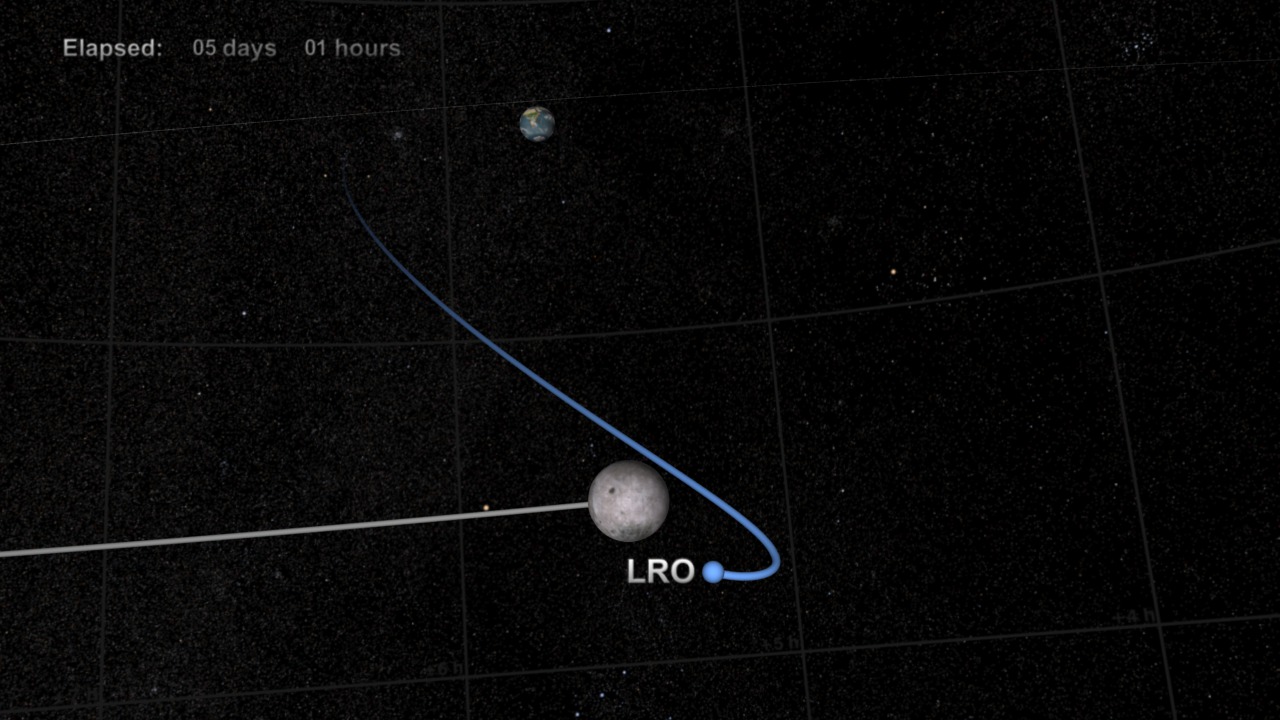Destination Moon
Achieving orbit around a celestial body is no simple feat. But on June 18, 2009, NASA’s Lunar Reconnaissance Orbiter (LRO) set out to accomplish that goal as it headed for the moon. The spacecraft was built at NASA’s Goddard Space Flight Center, where it was outfitted with advanced instruments for studying the moon and its environment. After launch from Cape Canaveral, Florida, LRO circled Earth once and then spent four days traveling through space. Once it reached the moon’s orbit, the spacecraft executed a series of burns that brought it within 31 miles of the lunar surface. At this range, from a polar orbit, LRO began collecting data used to create a 3-D map of the moon’s terrain. To this day, the spacecraft is still in operation, beaming back valuable information about Earth’s natural satellite. Check out the video to see a simulation of LRO’s journey to the moon.

NASA launches a robotic probe into lunar orbit.
In this simulation, the indicated time elapsed since launch is an approximation of LRO’s actual travel time.

LRO traveled more than 225,000 miles over four days to reach the moon.

The spacecraft positioned itself ahead of the moon and then dipped underneath it for insertion into a polar orbit.

LRO's orbit was highly elliptical at first. A series of burns dropped it closer to the moon's surface and into a near-circular orbit.

Traveling at a speed of 3,500 mph, LRO circles the moon every two hours.
Credits
Please give credit for this item to:
NASA's Goddard Space Flight Center
-
Animators
- Greg Shirah (NASA/GSFC)
- Ernie Wright (USRA)
- Alex Kekesi (Global Science and Technology, Inc.)
- Horace Mitchell (NASA/GSFC)
-
Producer
- Andrew Freeberg (NASA/GSFC)
-
Scientist
- John Keller (NASA/GSFC)
-
Writer
- Aviva H. Rutkin (USRA)
Release date
This page was originally published on Tuesday, May 14, 2013.
This page was last updated on Wednesday, May 3, 2023 at 1:52 PM EDT.
